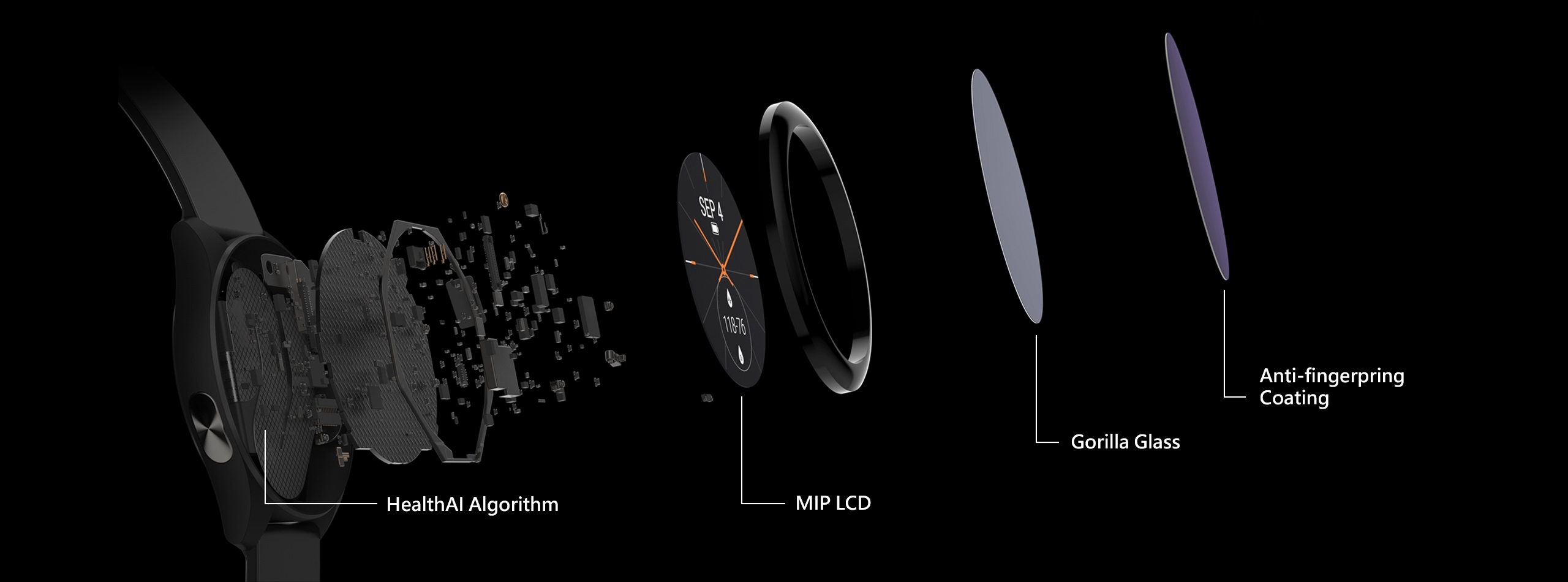-
PTT using PWV-measuring
principle -
Dual-sensing SpO2
detection technology -
Body Harmony index
and ANS Age -
Power-saving,
reflective display -
Successful story
A little more about Pulse-transit time (PTT)

1. How does VivoWatch calculate PTT?
VivoWatch employs a variety of sensor information and computations to determine your body's pulse-transit time (PTT). The key principle behind this is what's known as the pulse-wave velocity, or PWV. Data from both the ECG and PPG sensors, along with estimated arm length, is passed through an AI-powered algorithm.
2. How does VivoWatch calculate arm length?
When setting up your VivoWatch you will be asked to supply your height, and other personal details. After a calibration process, it is able to calculate your arm length with good precision.
3. What is the point of all this?
The sensors and AI algorithm work in tandem to learn about your body and health status, providing you with clear insights into your day-to-day well-being. Vital data, including heart rate, heart-rate variability, PTT, PWV, blood oxygen (SpO2) and autonomic-nerve status, feed back into the algorithm – so that over time VivoWatch becomes precisely tailored to your physiology and health. That, incidentally, is why we recommend against loaning your VivoWatch to someone else!
VivoWatch employs a variety of sensor information and computations to determine your body's pulse-transit time (PTT). The key principle behind this is what's known as the pulse-wave velocity, or PWV. Data from both the ECG and PPG sensors, along with estimated arm length, is passed through an AI-powered algorithm.
2. How does VivoWatch calculate arm length?
When setting up your VivoWatch you will be asked to supply your height, and other personal details. After a calibration process, it is able to calculate your arm length with good precision.
3. What is the point of all this?
The sensors and AI algorithm work in tandem to learn about your body and health status, providing you with clear insights into your day-to-day well-being. Vital data, including heart rate, heart-rate variability, PTT, PWV, blood oxygen (SpO2) and autonomic-nerve status, feed back into the algorithm – so that over time VivoWatch becomes precisely tailored to your physiology and health. That, incidentally, is why we recommend against loaning your VivoWatch to someone else!















